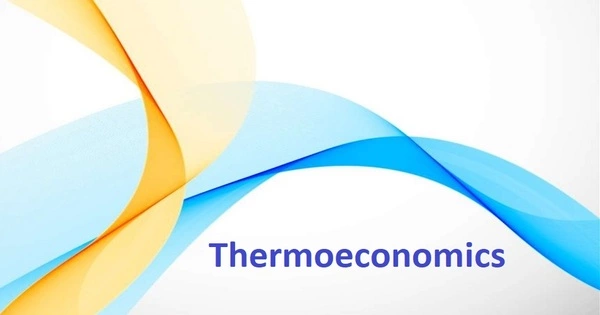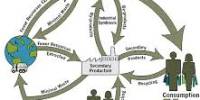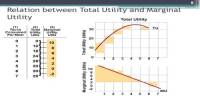Thermoeconomics combines thermodynamic principles with economic analysis to effect fundamental changes in process economic evaluation, design, and maintenance. It is a school of heterodox economics that applies the laws of statistical mechanics to economic theory. It is also known as biophysical economics.
Thermodynamic principles describe the flow, conservation, and conversion of energy, and thus have economic implications. It is a subfield of econophysics and can be thought of as the statistical physics of economic value. It is the study of the ways and means by which human societies procure and use energy and other biological and physical resources to produce, distribute, consume and exchange goods and services, while generating various types of waste and environmental impacts.
Thermoeconomics examines the economics of power generation from an exergetic standpoint, where exergy is available work energy. It is predicated on the assumption that the only rational basis for constructing a costing function is energy. It applies Engineering Accounting procedures to operating parameters, exergy efficiency, and pricing of a stream’s specific energy content. As a result, thermoeconomics is a useful tool for evaluating industrial processes and production cycles.
Biophysical economics draws on both social and natural sciences to overcome some of traditional economics’ most fundamental limitations and blind spots. It enables understanding of some key requirements and framework conditions for economic growth, as well as related constraints and boundaries.
The term Thermoeconomics refers to an economic theory derived from the application of thermodynamic laws to economics, particularly the second law. Early work on the subject begins with Frederick Soddy’s Wealth, Virtual Wealth, and Debt, but the term was coined by American engineer Myron Tribus in 1962 and developed by statistician and economist Nicholas Georgescu-Roegen.
Thermoeconomics has been used in industrial ecology to transform linear industrial processes into closed loop systems that resemble natural ecosystems. This application aims to create sustainable industrial systems in which waste treatment is handled efficiently and cost-effectively. Thermoeconomics has also been used to identify inefficiencies and potential energy savings in single production plants.
Thermoeconomics has been used in the analysis of fuel decarbonization and carbon dioxide separation plants, and thus in the reduction of environmental impacts caused by increased concentrations of global greenhouse gas emissions, which are widely held to be responsible for global warming. Thermoeconomics is, therefore, a practical process which if applied would give positive results ranging from sustainable and environmentally friendly industrial processes to cost effective means of energy use.
















